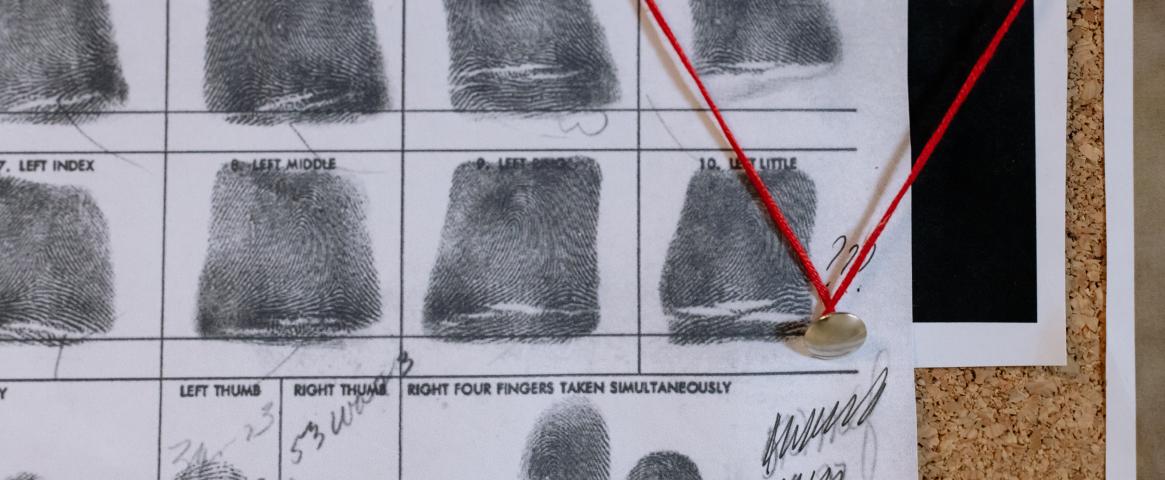By Marilyn Perkins. Mentored and edited by Jill Adams.
Forensic science can turn a grueling legal battle into an open-and-shut case with even the smallest of crime scene clues. Take the 1978 murder trial of infamous serial killer Ted Bundy — after a series of trial mishaps and prison escapes, he was eventually charged with murder thanks to the help of forensic dentists who matched his distinctive crooked teeth to a bite mark on a victim.
Forensics isn’t always so straightforward though: a fingerprint might be half-smudged and DNA might degrade if not collected soon enough. In these cases, forensic scientists rely on statistical methods to analyze imperfect evidence.
But, says William Thompson, a professor of criminology at the University of California, Irvine, “The people who are deciding guilt and innocence in criminal cases don't necessarily have any particular training in science or statistics.” So how are average citizens in a jury supposed to keep up?
The Association of Forensic Science Providers has proposed that explanations using words, rather than numbers, make forensic analyses easier for jurors to understand. But Kristy Martire, a forensic psychology professor from the University of New South Wales, warns that verbal translations of forensic conclusions may bring their own problems. Martire shared the results of her research at the annual meeting of the American Academy for the Advancement of Sciences on February 19.
Martire found that small changes in how forensic experts communicated their conclusions transformed the reactions of a mock jury. Her team created a virtual simulation that presented mock jurors with incriminating forensic reports. After reading the reports, the mock jurors shared how the evidence changed their perception of the defendant’s guilt or innocence.
Martire wanted to know if the average juror could grasp forensic reports that used likelihood ratios. Likelihood ratios are a statistical tool that forensic scientists use to quantify how incriminating evidence is on a graded scale, rather than forcing them to make definitive conclusions. Forensic scientists often avoid presenting jurors with likelihood ratios altogether due to their mathematical complexity.
One example of a numerical likelihood ratio, says Martire, is “the observed evidence is 4.5 times more likely when the suspect’s shoe made the mark than when the suspect’s shoe did not make the mark.” If that sounds confusing, don’t worry — that was the point of the study.
Martire also tested mock jurors’ responses to forensic reports that used the verbal translations of likelihood ratios recommended by the Association of Forensic Science Providers, Martire compared how mock jurors responded to both verbal and numerical forensic reports. A numerical likelihood ratio of 4.5 translated to “weak or limited” evidence, a ratio of 450 translated to “moderately strong” evidence, and a ratio of 495,000 translated to “very strong” evidence.
The results of the study revealed two concerning trends.
When mock jurors were presented with the low numerical likelihood ratio of 4.5, they appropriately perceived the defendant as slightly more guilty than before they had seen the evidence. But when presented with the verbal translation — “weak or limited” evidence, the jurors perceived the defendant as less guilty than before.
“This is what’s called a weak evidence effect,” says Martire. It turns out, according to Martire, that weakly incriminating evidence can provoke a paradoxical response that causes jurors to perceive a defendant as more innocent. Over half of the study participants made this choice.
There were problems at the other end of the spectrum, too. Mock jurors perceived the moderate and high likelihood ratios of 450 and 495,000 as similarly incriminating — even though the latter suggested the evidence was 1,000 times more incriminating.
These results, Thompson admits, “are a little disturbing.”
Martire still believes that researchers will develop a better strategy to communicate likelihood ratios to juries. “There is a problem, and we need to fix it. It's just a matter of finding the way to do that.”
People have suggested other solutions to relay complex forensic evidence such as likelihood ratios, although they often demand even more of jurors. “We could have more elaborate expert testimony,” suggests Thompson. “Presenting the likelihood ratio might take extra time.” Some forensic experts advocate for providing visual supplements alongside likelihood ratios.
As for if any of those solutions will work, Martire only had one thing to say: “I think the jury, ironically, is still out.”
Marilyn Perkins is a graduate student at Johns Hopkins University, where she is studying science writing. She is also a freelance book editor, illustrator, and intern for the upcoming West Coast Climate Crisis Symposium. She can be reached at marilynperkins7@gmail.com.
Image: Fingerprint panels are used to match suspect prints to a crime scene, but their results aren't always clear.


